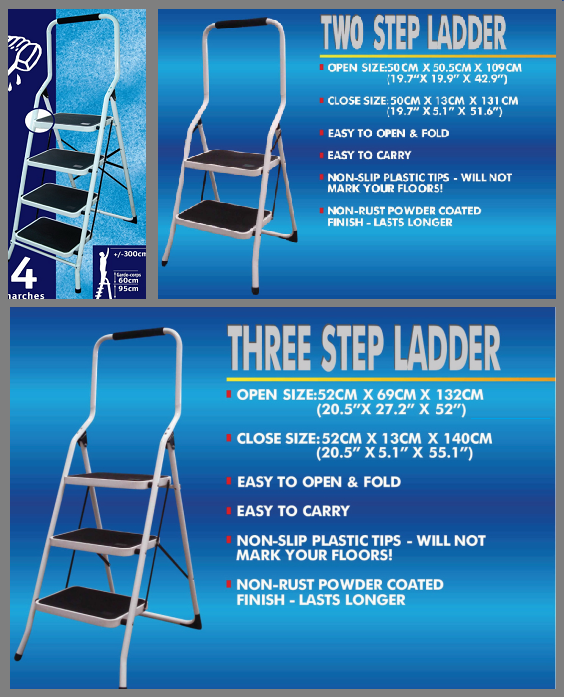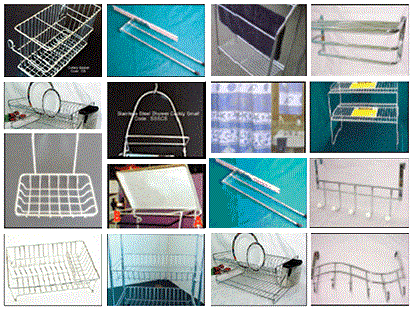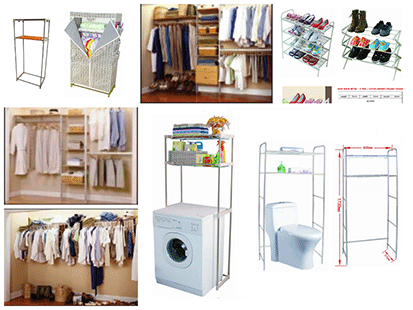STEEL STEP LADDERS | STOOLS
We say a ladder or step stool must be stable so there’s less chance of injury and overall compliance with Work, Health and Safety legislation in various States and to AS/NZS 4801 or OHSAS 180001.

Why do you comply with the Safety Standards?
With increasingly strict legislation not just in Australia but around the World including developing countries and acute community awareness, organisations are more than ever looking to achieve and demonstrate sound work, health & safety legislation, and performance and risk management. The accepted way of doing that is to develop and maintain a management system based on a recognised standard, and subject third and second party audits. Certification audit.
What is the difference between a ‘Domestic’ and an ‘Industrial’ ladder?
An ‘Industrial’ ladder must have a minimum load rating of 120kg and be labelled that it is suitable for Industrial use.
A ‘Domestic’ ladder must have a minimum load rating of 100kg and be labelled that it is suitable for Domestic use.
What does Clarona ladders do? Our ladders can take up to 150 Kgs weight more than expected from even Industrial ladder. How do we give? Quality of Step tools / Ladders is directly related to thickness of metal / tube, stable feet, big steps. Check out ours and you will see how different they are from others. Don’t be fooled by the looks, many of them look similar but it’s the thickness of metal that counts!!!
• Always ensure that the ladder is placed on a firm level surface.
• Check that each foot is in contact with the surface.
• Ensure that spreaders are fully extended prior to use.
• Do not use a ladder if the spreader is missing, loose or damaged.
• Regularly check ladder feet for excessive wear.
• When ascending or descending a ladder you must be facing the ladder and have three limbs in contact with the ladder at all times.
• Never stand or sit on the top cap. They are not designed to be used as a step/seat.
• Never stand on the tread immediately below the top cap as you may lose your balance.
• Do not over reach when using a ladder - ensure your body is centred within the ladder stiles. Keep your belt buckle inside the foot area of the ladder.
• Always descend the ladder prior to moving the ladder - do not attempt to make the ladder walk.
• Before moving a ladder take care to ensure that all tools and other items have been removed.
• Do not use a closed stepladder as a non-self-supporting ladder (e.g. leaning against a wall).
• Do not climb from one ladder to another.
• Do not use ladders as trestles as they are not designed for this type of use.
• Never use a metal stepladder where an electrical hazard exists.
• Do not exceed the load rating of the ladder.
• Do not use a ‘Domestic’ duty rated ladder for frequent heavy use, or in a workplace, an ‘Industrial’ duty rated ladder must be used.
• Carry tools and materials in a tool belt or have them passed to you.
›› Easy for storage
›› Easy to fold and unfold
›› Convenient grab rails
›› Will not mark floors
›› Unique locking system
›› Anti skid steps
›› Long handle
›› White epoxy
›› Powder coated
›› Anti-slip
›› Big step
›› Load up to 150kg







